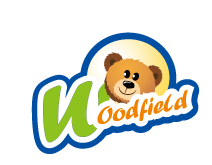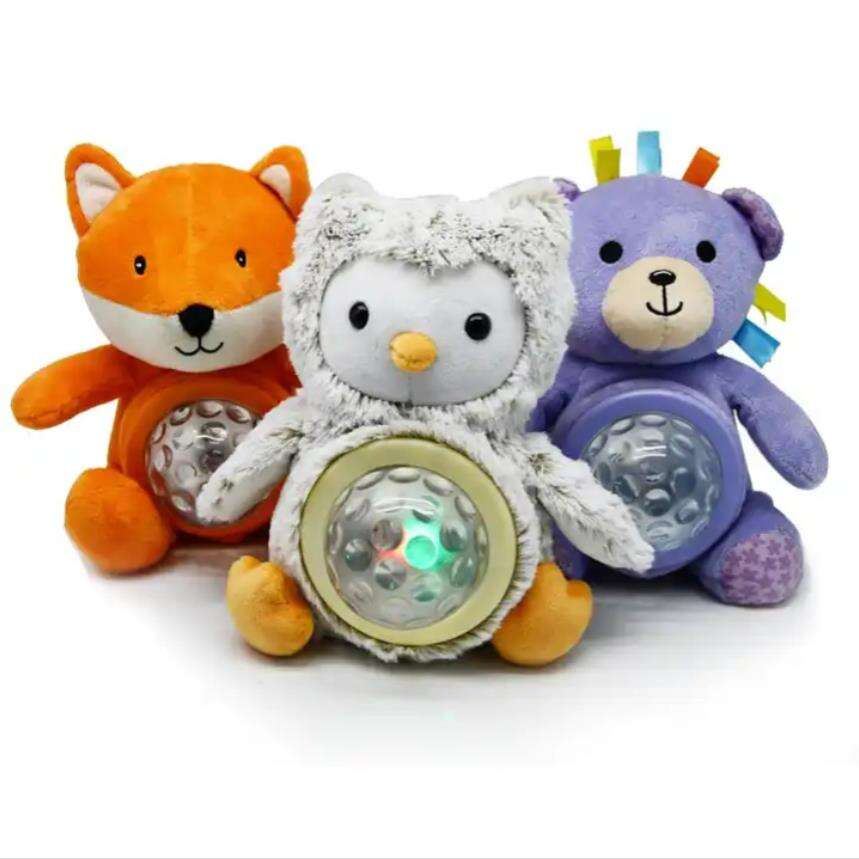Miten suunnitella osallistavia oppimispelejä?
Lelujen suunnittelu lasten kehitysvaiheiden mukaisesti
Piagetin kognitiivisen kehityksen teorian soveltaminen opettaviin leluihin
Kun on kyse kasvatusleluista, ne toimivat parhaiten silloin, kun valitsemme ne lapsen kehitystason mukaan. Jean Piaget laati kuuluisan teorian siitä, miten lapset ajattelevat eri vaiheissa, ja tämä auttaa vanhempia valitsemaan parempia leluja. Vauvoille, jotka ovat syntymästä noin kahteen vuoteen, tärkeintä ovat lelut, jotka opettavat esineiden jatkuvuudesta myös silloin, kun niitä ei näy, kuten ne tutut peek-a-boo -laatikot, joita useimmat vanhemmat tuntevat hyvin. Tähän ikään sopivat myös ääniä tuottavat lelut, joita painamalla tai liikuttamalla saa ääntä, sillä ne auttavat pientä ymmärtämään syy-seuraussuhteita. Kun lapset kasvavat iän myötä 2–7-vuotiaiksi pre-operaatiovaiheeseen, yksinkertaiset palapalat, joissa on vain kolme–viisi palaa, alkavat soveltua heidän kehittyvään aivoihinsa. Roolilelujoukot tulevat myös erinomaisiksi välineiksi, koska ne kannustavat mielikuvituspeliin, joka on itse asiassa tapa, jolla lapset oppivat ajattelemaan symbolisesti ilman, että monimutkaiset käsitteet aiheuttavat liiallista sekavuutta.
Ohjatun oppimisen tukeminen Vygotskyn sosiaalisen kulttuuriteorian avulla
Lev Vygotskyn lähikehityksen vyöhykkeen, eli niin sanotun ZPD:n, ajatus perustuu siihen, että lapsille esitetään haasteita, jotka ovat hieman vaikeampia kuin mitä he pystyvät juuri nyt ratkaisemaan yksin. Ajattele tässä yhteydessä magneettisia rakennuspalikoita. Kun vanhemmat istuvat esikoululaisten kanssa ja ohjaavat heitä rakentamisessa, lapset alkavat omaksua perustavanlaatuisia insinööritaitoja tietämättään. Viime vuonna julkaistu tutkimus osoitti myös mielenkiintoisen tuloksen: ZPD-periaatteiden mukaan suunnitellut lelut paransivat lasten muistiinpanojen soveltamista ongelmanratkaisussa noin 37 prosenttia verrattuna tavalliseen vapaaseen leikkiin, jossa kukaan ei suoraan auttanut.
Levun ominaisuuksien yhdistäminen kognitiivisiin, motorisiin ja leikkiin liittyviin kehitysvaiheisiin
- 18 kuukautta : Muotojen lajittelulautat, joissa on 2–3 muotoa, kehittävät tila-ajattelua
- 3 vuotta : Yhdistettävät rakennuspalikat (4–6 palaa) tarkentavat hienomotoriikkaa
- 5 vuotta : Monivaiheiset tieteen sarjat esittelevät hypoteesien testaamisen
Aistien ja motoristen taitojen kehityksen tukeminen kosketuksellisella leikillä
Teksturoidut pinottavat renkaat ja kinetiikkahiekkalaatat aktivoivat aistien yhdentämiseen keskeisiä hermopolkuja. Tutkimukset osoittavat, että lasten, jotka käyttävät kosketuksellisia leikkimateriaaleja, proprioseptinen kehitys on 28 % nopeampaa. Vältä ylireagointia – lelujen tulisi tarjota 2–3 erilaista tekstuuria neljänteen ikävuoteen asti.
Oppimistulosten maksimointi tarkoilla lelujen ominaisuuksilla
Suunnittelu mitattavan STEM- ja kognitiivisen taidon kehittämisen edistämiseksi
Kasvatustarkoituksella varustetut lelut saavuttavat parhaan vaikutuksen, kun suunnittelijat yhdistävät ominaisuudet tiettyihin oppimistavoitteisiin. Uusimmat tutkimukset osoittavat, että STEM-painotteiset lelut parantavat esi-kouluiän lasten tilallista päättelykykyä 34 %:lla, kun ne sisältävät vaiheittain eteneviä haasteita (Frontiers in Education 2024). Keskeisiä suunnittelustrategioita ovat:
- Fysiikkaan perustuvat komponentit : Hammaspyörät ja kaltevat tasot, jotka opettavat syy-seuraus-suhteita
- Matematiikan integrointi : Modulaariset palikat, joihin on merkitty mittajako
- Tieteelliset havainnointityökalut : Suurennuslasit, jotka kiinnitetään rakennussarjoihin
Ongelmanratkaisun ja kriittisen ajattelun edistäminen leikissä
Tehokkaimmat lelut tarjoavat avoimia haasteita, joihin on olemassa useita ratkaisupolkuja. Tutkimusten mukaan epäselvät ratkaisut sisältävät pulmat parantavat hajotaivaltamista 27 % enemmän kuin yksittäisiin vastauksiin perustuvat vaihtoehdot. Suunnittelijoiden tulisi:
- Luo jännitepisteitä, joissa osat sopivat useisiin eri konfiguraatioihin
- Piilottaa ratkaisut vaiheittaisiin askeliin (esim. kerrostettuihin pulmamekanismeihin)
- Tarjota portaittain lisääntyviä vihjeitä värikoodatuilla alijärjestelmillä
Aktiivisten, käytännön oppimiskokemusten edistäminen
Moniaistinen osallistuminen lisää tiedon säilyttämistä 48 % verrattuna passiiviseen leikkiin kehitystutkimusten mukaan. Kosketukselliset suunnitteluelementit, joita on osoitettu tehokkaiksi:
| Ominaisuuden tyyppi | Oppimisedut | Esimerkki toteutuksesta |
|---|---|---|
| Tekstuurierot | Aistillinen erottelu | Korostetut numerot palikoissa |
| Kinettiset komponentit | Fysiikan ymmärtäminen | Heiluripohjaiset marmoriradat |
| Materiaalieroavuudet | Luokittelutaidot | Magneettiset/ei-magneettiset osat |
Oppimisarvon ja luonnollisen osallistumisen tasapainottaminen
Onnistuneet kasvatukselliset lelut piilottavat oppimistavoitteet vetovoimaisiin tarinoihin. Vuoden 2023 leikkitutkimus osoitti, että lapset viettivät 72 % enemmän aikaa tarinaelementtejä sisältävien lelujen kanssa verrattuna abstrakteihin taitojen harjoittamiseen tähtääviin leluihin. Suunnittelun tasapainotekniikoihin kuuluu:
- Matematiikkahaasteiden upottaminen aarteenetsintäskenaarioihin
- Insinööritehtävien esittäminen hahmon pelastustehtävinä
- Ohjelmoitavien robottien käyttäminen "lempieläin"-kumppaneina, joille annetaan hoito-ohjeita
Luovuuden, mielikuvituksen ja sosiaalisen oppimisen edistäminen
Kasvatukselliset lelut, jotka painottavat luovaa ilmaisua ja yhteistyöllistä leikkiä, auttavat lapsia kehittämään olennaisia taitoja 2000-luvulle. Kehityspsykologian periaatteisiin juurtuvien suunnitteluperiaatteiden integroinnilla valmistajat voivat luoda leluja, jotka herättävät mielikuvitusta samalla kun rakentavat sosiaalisia taitoja.
Avoimen päättymisen lelujen suunnittelu tukeakseen luovaa ilmaisua
Lapset hyötyvät leluista, joita voidaan käyttää eri tavoilla, kuten rakennuspalikoista, jotka kiinnittyvät toisiinsa, tai taidekäsitöistä, joiden osia voidaan vaihtaa keskenään. Viime vuonna tehty tutkimus leikkimisen kautta tapahtuvasta oppimisesta paljasti mielenkiintoisen havainnon avoimien ja yksitoimisten lelujen välillä. Tutkimus osoitti, että noin kolme neljäsosaa lapsista, jotka leikkivät monikäyttöisillä leluilla, on parempia ratkaisemaan ongelmia luovasti verrattuna vertaisiinsa, jotka ovat rajoittuneet vähemmän monipuolisiin vaihtoehtoihin. Näiden lelujen erityislaatuisuus piilee niiden tarjoamassa mahdollisuudessa rajojen ylittämiseen. Lapset yhdistävät osia odottamattomilla tavoilla, mikä auttaa heitä ymmärtämään tilasuhteita ja kehittämään tarinoita leikkiessään.
Teatterileikin ja symbolileikin rooli kognitiivisessa kasvussa
Kun lapset leikkivät kuvitteellisilla keittiöillä tai pukeutuvat asusteisiin, he voivat tutkia suuria ideoita tietämättä siitä. Kuvitteellisessa leikissä tapahtuva ajattelu luo aivoissa yhteyksiä, jotka liittyvät tunteiden ymmärtämiseen ja siitä, mitä seuraavaksi tapahtuu. Otetaan esimerkiksi lapsi, joka valmistaa aterian pehmoeläimilleen: hän oppii, miten asiat liittyvät toisiinsa (kuten ainesosien laittaminen kattilaan), samalla kun harjoittelee huolenpitoa muista. Tällainen mielikuvituksen leikki antaa lasten käsitellä myös arjessa tapahtuvia asioita. He saattavat esimerkiksi näytellä lääkärissä käyntiä pistoksen jälkeen, mikä auttaa heitä ymmärtämään pelottavia hetkiä turvallisesti.
Yhteistyön ja sosiaalisen vuorovaikutuksen edistäminen
Ryhmäpelejä, kuten yhteistyöpohjaisia lautapelejä tai rakennussarjoja, jotka edellyttävät tiimityötä, auttavat lapsia oppimaan, kuinka päättää tehtävien jakamisesta ja jakaa tavaroita. Tutkimukset osoittavat, että kun lapset pelaavat yhdessä yksin pelaamisen sijaan, heidän kykynsä nähdä asioita muiden näkökulmasta kehittyy noin 42 prosenttia paremmin kuin niillä, jotka pelaavat yksin. Tämä johtuu siitä, että heidän täytyy keskustella ajatuksistaan ja ratkaista asioita erimielisyyksien noustessa esiin. Näiden lelujen luonne, jossa on yhteisiä tavoitteita tai toisiaan tarvitsevia osia, edistää tärkeiden sosiaalisten taitojen kehittymistä ajan myötä, mukaan lukien muiden sanoman tarkka kuuntelu ja kompromissin löytämisen oppiminen.
Oppimisen vaiheittaista tukea käyttäen
Lapset hyötyvät paljon leluista, joiden vaikeustasoa voidaan säätää, koska ne auttavat heitä kehittämään taitojaan askel askeleelta turhautumatta. Ajattele pulmapeliä, jossa on eritasoisia haasteita, tai rakennussarjoja, joissa on valinnaisia osia lisämonimutkaisuutta varten. Tämä ajatus sopii hyvin yhteen Lev Vygotskyn lähikehitysvyöhykkeen teorian kanssa. Periaatteessa kun lapset kohtaavat haasteita, jotka ovat hieman nykyistä taitotasoaan vaativampia, mutta silti saavutettavissa tuen avulla, he kasvattavat luottamustaan menestyessään. Otetaan esimerkiksi koodausrobotit. Monet niistä opettavat aluksi perusohjeita, kuten käännös vasemmalle tai suoraan eteenpäin, ja siirtyvät vähitellen monimutkaisempiin ohjelmointikäsitteisiin. Tämä asteittainen eteneminen antaa lasten tottua ensin perusteisiin ennen kuin siirrytään vaikeampiin asioihin.
Käyttäjälähtöisen suunnittelun ajattelun soveltaminen opetuslelujen kehittämiseen
Kasvatuslelujen suunnittelussa menestys juontaa juurensa niihin suunnittelun ajattelumallien soveltamiseen, joissa lapset ovat keskiössä. Koko prosessi alkaa lasten todellisten tarpeiden ymmärtämisestä havainnoinnin ja vanhempien kanssa puhumisen kautta, jonka jälkeen prototyyppejä rakennetaan uudelleen ja uudelleen, kunnes löydetään toimiva ratkaisu. Hyvät lelut vastaavat lasten ajattelutapaa eri iän vaiheissa ja toimivat monien erilaisten oppimistyylien kannalta. Turvallisuus on tietysti erittäin tärkeää, mutta samoin tärkeitä ovat myös ajallisesti seurattavissa olevat tulokset. Älykkäät suunnittelijat tekevät tuotteita, jotka kasvavat lasten mukana heidän kehittyessään ja pysyvät kiinnostavina ilman turhautumista. Jotkin yritykset testaavat lelujaan oikeissa luokkahuoneissa ennen lopullisten suunnitelmien vahvistamista, mikä auttaa havaitsemaan mahdollisia ongelmia varhaisessa vaiheessa.
Suunnittelun ajattelun käyttöönotto innovatiivisten kasvatuslelujen kehittämiseen
Kaksinkertaisen timantin lähestymistapa toimii melko hyvin opetuslelujen valmistuksessa. Se sisältää lasten oikean toiminnan tarkkailun, ideoihin pääsemisen, prototyyppien rakentamisen ja niiden testaamisen. Jokin viime vuoden tutkimus tarkasteli, miten suunnittelu vaikuttaa lelujen innovaatioihin. Löydetyt tulokset olivat mielenkiintoisia – ryhmät, jotka noudattivat tätä menetelmää, luovat leluja, jotka pitävät lapset mukana noin 35 prosenttia pidempään kuin muut, koska ne korjaavat todellisia oppimisongelmia. Koko prosessi yhdistää luovuuden ja käytännöllisen ajattelun, jotta suunnittelijat voivat muuttaa epämääräiset ideat sellaiseksi, jota lapset voivat koskea ja pelata. Monet yritykset ovat saavuttaneet menestystä tällä menetelmällä kehitettäessä uusia opetustuotteita.
Lasten osallistaminen yhteissuunnittelijoina kehitysprosessissa
Lapsien mukaan ottaminen suunnitteluvaiheissa varmistaa, että lelut täyttävät intuitiivisen käytettävyyden standardit. Yhteissuunnittelulaboratoriot paljastavat, miten kohderyhmä käsittelee prototyyppejä – olipa kyse sitten otteen säädöistä pienemmille kämmenille tai värikoodattujen ohjeiden yksinkertaistamisesta. Aikainen osallistuminen edistää myös tunnepohjaista sitoutumista, mikä lisää kestävän käytön todennäköisyyttä tuotteen julkaisun jälkeen.
Prototyypin valmistus ja iteratiivinen testaus oikeiden käyttäjien kanssa
Kun testaamme tuotteita uudelleen ja uudelleen lasten kanssa, löydämme kaikenlaisia turvallisuusongelmia ja käytettävyysongelmia, jotka eivät yksinkertaisesti näy paperilla tehtyissä suunnitelmissa. Otetaan esimerkiksi lelujen terävät kulmat – kun on nähnyt, miten pikkuiset todella leikkivät niillä, suunnittelijat pyrkivät pyöristämään kulmat. Kun taas rakennuspalikoista tai palapelin osista on kyse, kokoja säädellään jatkuvasti sen mukaan, mitä lapset voivat helposti ottaa kiinni ja käsitellä. Joidenkin tämän toistuvan suunnittelun parissa tehdyt tutkimukset viittaavat siihen, että noin kolmen testikierroksen jälkeen tuotteet toimivat paremmin lasten kanssa noin 40 %:n varmuudella. Ei huono luku, kun halutaan varmistaa, että tuote on sekä turvallinen että hauska käyttää.
Turvallisuuden, kestävyyden ja ikäluokalle sopivien haasteiden varmistaminen
Kun testataan näiden tuotteiden kestävyyttä, valmistajat simuloidaakin kuuden kuukauden ajanjaksolla säännöllisesti tapahtuvaa käyttöä, mutta tekevät sen kaiken vain kahden viikon sisällä. He tarkistavat, miten materiaalit kestävät jatkuvaa rasitusta ja kulumista. Nykyisin näemme yhä enemmän läpinäkyviä akryylejä ja elintarvikkeille turvallisia silikoneja, joita käytetään vanhojen muovien sijaan. Joidenkin vuonna 2023 kuluttajatuoteturvallisuuskomission julkaisemien tilastojen mukaan tämä siirtyminen on vähentänyt tukahdutusriskiä noin viidesosalla. Myös monimutkaisuuden skaalaamisen käsite on varsin mielenkiintoinen. Periaatteessa lelut on suunniteltu siten, että ne voivat kehittyä käyttäjiensä mukana. Otetaan esimerkiksi toisiinsa liitettävät palapelin osat. Kun lapset kehittävät parempaa hienomotoriikkaa, uusia paloja lisätään pitämään haasteellisuus tasolla, joka ei kuitenkaan ole turhauttavaa. Tämä on kuin lelu, joka kasvaa lapsen mukana.
Lapsen mukana kasvavien sopeutuvien ja skaalautuvien lelujen luominen
Modulaaristen komponenttien suunnittelu kehittyville taitotasolle
Lelut, jotka kestävät pidempään, sisältävät usein modulaarisia suunnitteluratkaisuja, jotka kasvavat lasten mukana eri kehitysvaiheissa. Otetaan esimerkiksi ne magneettiset laatat tai ohjelmoitavat rakennuspalikat. Kolmevuotias lapsi saattaa vain pinota niitä, mutta seitsemän ikävuoden tienoilla sama lelujoukko muuttuu täysin erilaiseksi, kun lapsi alkaa rakentaa monimutkaisia rakennuksia, jotka testaavat tilallista hahmottamiskykyä. Joidenkin vuonna 2023 julkaistujen Early Childhood Education Journal -lehden tutkimusten mukaan lelut, joita voidaan säätää eri vaikeustasoille, auttavat lapsia muistamaan oppimaansa paremmin – noin 28 % parempi tulokset verrattuna tavallisiin leluihin, joita ei voi muuttaa. Näiden mukautuvien lelujärjestelmien suuri etu on siinä, että vanhemmat voivat säätää haasteita lapsen edetessä peruslaskemisesta kaavojen tunnistamiseen tai myöhemmin tarvittavien pienten käsiliikkeiden kehittämiseen kirjoittamista varten.
Monitasoisten haastejärjestelmien rakentaminen pitkäaikaiseen osallistumiseen
Oppimisjärjestelmät, jotka etenevät kuin videopelien tasoja, toimivat erittäin hyvin lapsille. Ajattele näin: useimmat pulmat alkavat muotojen lajittelulla, ja ne vaikeutuvat asteittain, kunnes ne sisältävät monimutkaisia insinööritehtäviä. Tutkimus seurasi 450 lasta, kun he leikkivät erilaisten lelujen kanssa. Ne lapset, joiden lelut vaikeutuivat ajan myötä, pysyivät mukana noin 42 prosenttia pidempään kuuden kuukauden aikana verrattuna leluihin, joissa oli vain yksi ratkaisu alusta loppuun. Ota esimerkiksi mekaaniset ohjelmointikortistot. Ne noudattavat tätä mallia melko tarkasti. Lapset saattavat aloittaa hammaspyörien yhdistämisellä, mutta lopulta he rakentavat algoritmeja, jotka vastaavat sitä, mitä opetetaan alakoulun STEM-luokissa. On helppo ymmärtää, miksi vanhemmat ja opettajat innostuvat niistä.
Kehitysvaiheiden tukeminen ilman vanhenemista
Eteenpäin katsovat suunnitteluratkaisut yhdistävät usein vahvan ABS-muovin leluihin, jotka antavat lasten leikkiä monin eri tavoin. Ota esimerkiksi yksinkertainen muotojen lajittelija pienten varten – liitä siihen numerot, ja yhtäkkiä se auttaa opettelemaan matematiikan käsitteitä. Käännä sitä vielä ympäri ja lisää rampit, ja nyt puhutaan jo perusfysiikan periaatteista. Viime vuoden Sustainable Play -instituutin raportin mukaan tällaiset monikäyttöiset lelut vähentävät jätettä lähes kaksi kolmasosaa. Entistäkin tärkeämpää on, että ne säilyvät hyödyllisinä lapsille useiden kehitysvaiheiden ajan, toimien vähintään kolmen eri ikäryhmän tarpeisiin. Yritykset mahdollistavat tämän fiksuilla suunnitteluratkaisuilla, kuten kääntyvillä osilla, lisäosilla, jotka laajentavat toiminnallisuutta, sekä teksturoiduilla alueilla, jotka aktivoivat useita aisteja tukeakseen erilaisia oppimistavoitteita lapsuuden eri vaiheissa.
UKK-osio
Mitä keskeisiä seikkoja tulisi ottaa huomioon valittaessa lapsille tarkoitettuja opetusleluja?
Ota huomioon lapsen kehitysvaihe ja varmista, että lelut vastaavat hänen kognitiivisia ja motorisia taitojaan. Leluste tulisi myös tukea aistien integraatiota ja niiden tulisi olla suunniteltu edistämään ongelmanratkaisua ja kriittistä ajattelua.
Miten Vygotskyn lähikehityksen vyöhyke hyödyttää opetustoysia?
Vygotskyn teoria ehdottaa haasteiden esittämistä hieman lapsen nykyisten taitojen yläpuolella. Tätä periaatetta noudattavat opetuslelut auttavat lapsia kehittämään edistyneempiä ongelmanratkaisutaitoja ohjatussa oppimisessa.
Miksi avoimet lelut ovat hyödyllisiä lapsille?
Avoimet lelut, kuten rakennuspalikat tai taidekäset, rohkaisevat luovuutta ja ongelmanratkaisua, koska lasten voidaan käyttää niitä monin tavoin. Ne auttavat kehittämään tilallista hahmottamista ja kognitiivista kasvua edistämällä mielikuvituksellista leikkiä.
Suositellut tuotteet
Uutiskanava
-
Oikeiden kasvatuksellisten lelut eri ikäryhmille valitseminen
2024-11-08
-
Materialit nukkeiden tuottamiseen käytetyt
2024-11-04
-
Kiinalaiset lelutehtaat johtavat maailmanmarkkinoita innovaatioilla ja laadulla.
2024-01-23
-
Miten turkis lelu voi parantaa mielenterveyttä ja hyvinvointia
2024-01-23
-
Plüssä lelujen tehtaan teollisuuden suuntaukset: kasvava markkinat haasteet ja mahdollisuudet
2024-01-23
-
Pellosarjan kysyntä kasvaa
2024-01-23
-
Woodfieldin verkkosivusto verkossa
2024-01-22

 EN
EN
 AR
AR
 BG
BG
 HR
HR
 DA
DA
 NL
NL
 FI
FI
 FR
FR
 DE
DE
 EL
EL
 IT
IT
 JA
JA
 KO
KO
 NO
NO
 PT
PT
 RO
RO
 RU
RU
 ES
ES
 SV
SV
 TL
TL
 IW
IW
 ID
ID
 SR
SR
 UK
UK
 HU
HU
 MT
MT
 TH
TH
 TR
TR
 FA
FA
 MS
MS
 GA
GA
 IS
IS
 EU
EU
 BN
BN
 LO
LO
 LA
LA
 SO
SO
 KK
KK

